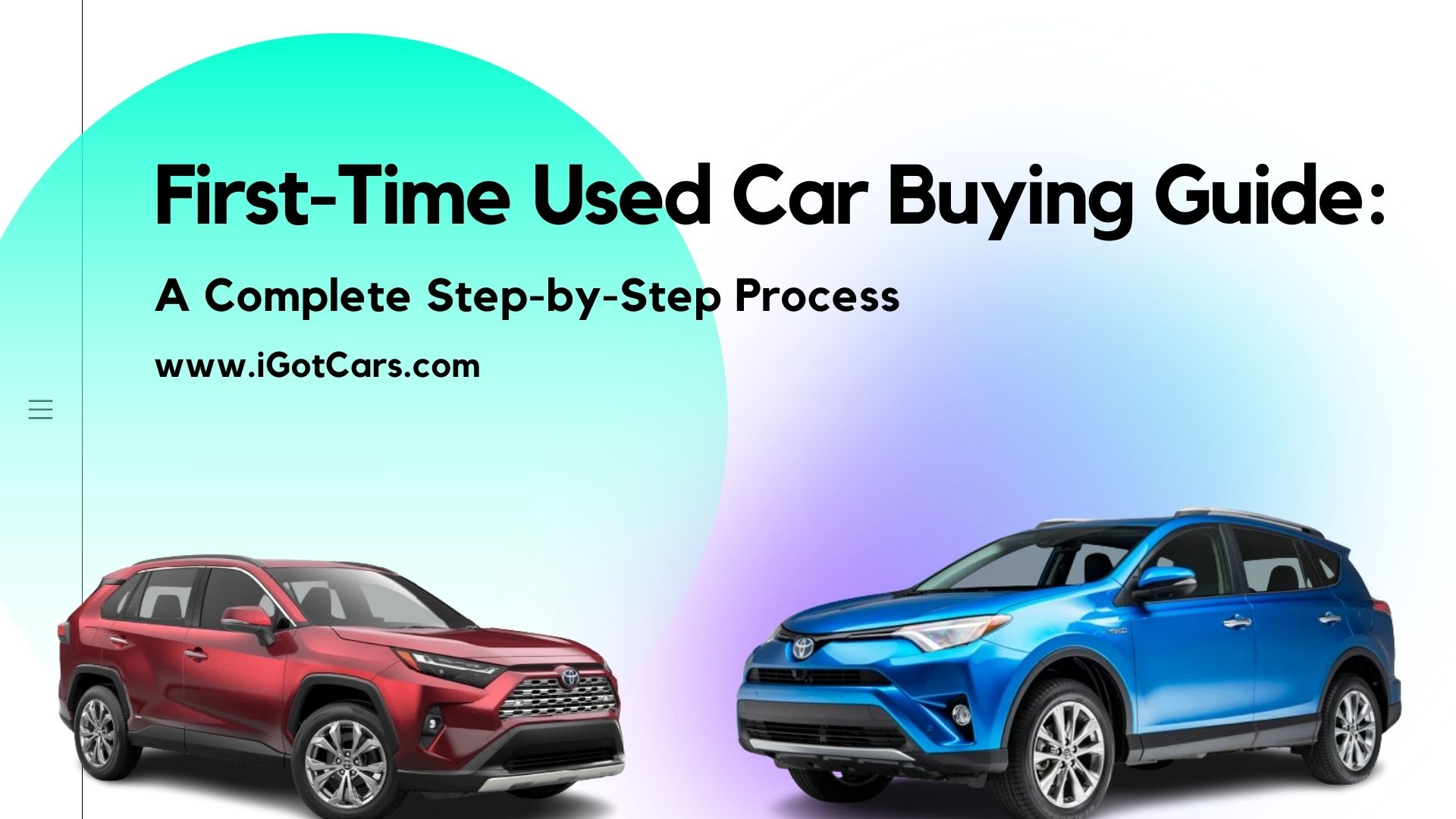-
1Personal Info
-
2Address Info
-
3Income Info
-
4Vehicle Info
-
5Review
First-Time Used Car Buying Guide: A Complete Step-by-Step Process

Purchasing your first used car is a significant milestone and can be an exciting yet intimidating endeavor. With the right knowledge and careful planning, you can make an informed decision that ensures you drive away with a reliable and affordable vehicle. This comprehensive guide will take you through the entire process, from setting your budget to sealing the deal.
Benefits of Buying a Used Car
Before diving into the details, let’s look at why buying a used car is a smart decision:
- Cost-Effective: Used cars generally cost much less than new cars, allowing you to get more for your money.
- Lower Depreciation: New cars depreciate quickly, losing a significant portion of their value within the first few years. Used cars depreciate at a slower rate.
- Reduced Insurance Costs: Insurance premiums for used cars are typically lower than for new cars.
- Variety of Choices: The used car market offers a vast array of options, including models that may no longer be available new.
Establishing Your Budget
Determining your budget is the crucial first step. Consider these factors:
- Purchase Price: Decide on a maximum amount you’re willing to spend on the car.
- Additional Expenses: Include costs for insurance, registration, taxes, and any immediate repairs or maintenance.
- Financing Options: Look into financing options, including loans and in-house financing, especially if you have credit challenges.
Researching the Right Car
Once you have a budget, start researching the type of car that suits your needs:
- Vehicle Type: Consider what type of vehicle best fits your lifestyle, whether it’s a sedan, SUV, truck, or hatchback.
- Reliability: Research the reliability of different makes and models through resources like Consumer Reports and J.D. Power.
- Features: Identify must-have features such as fuel efficiency, safety ratings, technology, and cargo space.
Where to Look for Used Cars
There are several places to find used cars:
- Dealerships: Reputable used car dealerships often provide a variety of makes and models and may offer warranties and financing options.
- Online Listings: Websites like Autotrader, Cars.com, and Craigslist offer extensive listings of used cars.
- Private Sellers: Purchasing from private sellers can sometimes offer better deals, but requires more due diligence.
Inspecting the Vehicle
Inspecting the vehicle thoroughly is essential to avoid future problems:
- Exterior Check: Look for rust, dents, and paint damage. Ensure all lights and signals are working.
- Interior Check: Examine the condition of the seats, dashboard, and controls. Test all electronic features like the radio and air conditioning.
- Under the Hood: Check for leaks, corrosion, and the condition of belts and hoses. Ensure fluid levels are adequate.
- Tires: Inspect tires for wear and tear, and check for uneven wear, which could indicate alignment issues.
- Test Drive: Take the car for a test drive to assess its performance, handling, and any unusual noises.
Checking the Vehicle’s History
A vehicle history report can provide important information about the car’s past:
- Accident History: Check for any reported accidents or damage.
- Ownership: Determine the number of previous owners and whether the car was used as a rental or fleet vehicle.
- Maintenance Records: Review the car’s service history.
- Title Status: Ensure the car has a clean title with no liens.
Negotiating the Price
Effective negotiation can help you get the best deal:
- Market Research: Know the market value of the car based on its make, model, year, and condition.
- Leverage Issues: Use any flaws or issues identified during the inspection as negotiation points.
- Stay Firm: Be polite but firm about your budget and the price you’re willing to pay.
Completing the Purchase
Once you’ve agreed on a price, it’s time to finalize the purchase:
- Review the Contract: Carefully read the sales contract, ensuring all terms and conditions are clear and agreed upon.
- Warranty Options: If possible, obtain a warranty for added peace of mind.
- Complete Paperwork: Ensure all necessary paperwork is completed, including title transfer and registration.
- Insurance: Obtain insurance coverage for the car before driving it home.
Post-Purchase Steps
After purchasing your used car, there are a few more steps to take:
- Regular Maintenance: Follow the manufacturer’s recommended maintenance schedule to keep your car in good condition.
- Address Issues Promptly: Deal with any problems as soon as they arise to avoid more significant issues later.
- Keep Records: Maintain detailed records of all services and repairs for future reference.
Avoiding Common Pitfalls
To ensure a smooth buying process, avoid these common mistakes:
- Skipping the Inspection: Always inspect the vehicle thoroughly before purchasing.
- Neglecting the History Report: A vehicle history report is crucial for understanding the car’s background.
- Ignoring the Fine Print: Read and understand all terms and conditions in the sales contract.
- Rushing the Decision: Take your time to find a car that meets your needs and budget.
Buying a used car for the first time can be a rewarding experience with the right preparation and knowledge. By following this step-by-step guide, you can navigate the process confidently and find a reliable, affordable vehicle that suits your needs.
With careful research, thorough inspections, and smart negotiations, your first used car purchase can be a positive and satisfying experience. Happy car shopping!
Copyright © 2020-2021 | iGOTCARS
